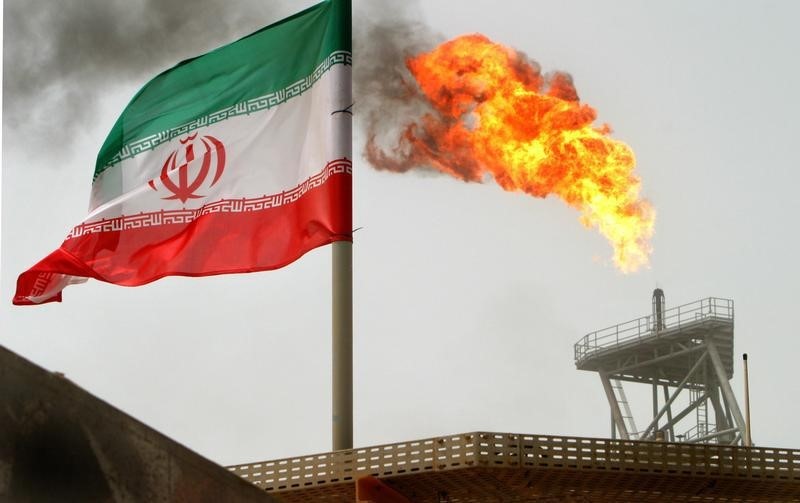Investing.com - Crude prices rebounded on Wednesday, hitting fresh three-and-a-half-year highs after U.S. President Donald Trump walked away from an international nuclear deal with Iran, raising the risk of conflict in the Middle East and casting uncertainty over global oil supplies.
Brent crude futures, the benchmark for oil prices outside the U.S., jumped $2.08, or around 2.8%, to $76.93 a barrel by 3:35AM ET (0735GMT), after climbing to $77.20 earlier in the session, its highest since November 2014.
Meanwhile, New York-traded WTI crude futures surged $1.86, or 2.7%, to $70.92 a barrel, after rising as high as $71.17 at one point, also close to highs last seen in late 2014.
Oil prices had declined in the last session although they settled above their session lows following Trump's announcement.
In a televised speech Tuesday, Trump said the United States would withdraw from a 2015 international agreement designed to deny Tehran the ability to build nuclear weapons, and also reimpose “the highest level of economic sanctions” against Iran.
Some analysts have said the reinstatement of sanctions could lead to tighter global oil supplies as they make it more difficult for Iran to export oil.
Iran, which is a major Middle East oil producer and member of the Organization of the Petroleum Exporting Countries (OPEC), resumed its role as a major oil exporter in January 2016 when international sanctions against Tehran were lifted in return for curbs on Iran's nuclear program.
Meanwhile, investors looked ahead to fresh weekly data on U.S. commercial crude inventories to gauge the strength of demand in the world’s largest oil consumer and how fast output levels will continue to rise.
The U.S. Energy Information Administration will release its official weekly oil supplies report for the week ended May 4 at 10:30AM ET (1430GMT), amid forecasts for an oil-stock drop of 719,000 barrels.
Analysts also forecast a fall of 450,000 barrels for gasoline stockpiles, while distillate inventories are expected to drop by 1.3 million barrels.
After markets closed Tuesday, the American Petroleum Institute said that U.S. oil inventories fell by nearly 1.9 million barrels last week.
The API data also showed a decline of about 2.1 million barrels in gasoline stockpiles, while inventories of distillates dropped by 6.7 million barrels.
There are often sharp divergences between the API estimates and the official figures from EIA.
In other energy trading, gasoline futures tacked on 1.2% to $2.159 a gallon, while heating oil surged 2.5% to $2.211 a gallon.
Natural gas futures were a shade higher at $2.740 per million British thermal units.
